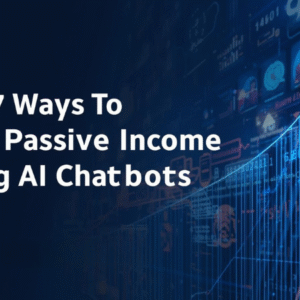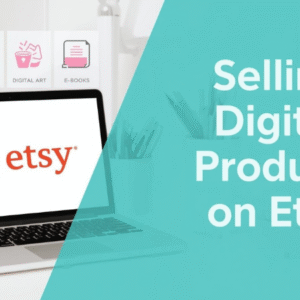Pinterest has been around long enough that some people wonder if it’s still worth using for making money online. With so many platforms fighting for attention, it’s easy to assume Pinterest is just for recipes or crafting inspiration. But the truth is, this visual search engine quietly drives a ton of traffic. It also has some fresh options for turning those clicks and saves into actual cash. Pinterest’s users are often in discovery mode, ready to shop or learn, making it unique compared to other social platforms where selling might feel more forced.
If you’re curious about whether Pinterest is still a solid moneymaker and how to actually profit from it right now, I’ve got some real-world strategies that are working. Whether you’re already a content creator, running an online shop, or just looking for side hustle ideas, the options below are pretty practical, even if you’re just starting out.
So, get a quick overview below, then keep scrolling for extra details, FAQs, and straightforward advice based on what I’ve seen work best. Pinterest has tools for almost every niche and style, so don’t feel boxed in, there’s something here for everyone.
TL;DR: Can You Still Make Money on Pinterest?
Short answer: Yes, Pinterest can be a solid place to earn money.
- The main ways people are cashing is include affiliate marketing, selling products, driving traffic to blogs, promoting services, working with brands, launching digital downloads, and offering online courses.
- Success comes down to picking the strategies that fit your strengths, using smart SEO so your pins get found, and staying consistent with posting and interacting with others.
1. Affiliate Marketing: Share Links, Earn Commissions
Affiliate marketing on Pinterest is still one of the easiest ways to start earning money, even if you don’t have your own website. Here’s how it works: you create and pin images that promote products, and when someone clicks your special link and makes a purchase, you get a commission.
This method is great if you love curating cool finds, think gadgets, fashion, beauty, or even digital products. The trick is picking products that people actually want, writing catchy pin descriptions using keywords, and sticking to brands with good affiliate programs (Amazon, Awin, RewardStyle, and so on are worth checking out). When you combine this with visually appealing pins, your affiliates can really stand out in busy feeds. It’s not just about the link, it’s about connecting the right product with the right audience.
How to Get Started:
- Sign up for affiliate programs that allow Pinterest traffic. Some programs do not allow Pinterest links, so double-check guidelines before posting.
- Create pins that match popular searches (like “best summer sandals” or “minimalist home decor ideas”).
- Use relevant hashtags and SEO keywords in your pin titles and descriptions. This helps your content reach the right people who are searching for recommendations.
- Be transparent, add “affiliate link” when required.
What’s really important: focus on quality over quantity and make sure your pins look professional and clickable. High-quality visuals get more saves, which means longer-term earnings.
2. Sell Physical or Digital Products
Running an online shop, but not getting enough eyeballs on your products? Pinterest works like a free billboard for all kinds of shops, from handmade jewelry to digital planners and printables. People actually come to Pinterest ready to shop and save ideas, which means there’s real potential for sales, even more so than some other social platforms. In fact, many users treat Pinterest like a shopping search engine, making it a powerful tool for sellers.
You can link pins directly to your Etsy, Shopify, or WooCommerce listings. For digital products like templates, guides, or art prints, Pinterest’s audience is always looking for new downloads that solve a problem or look good. If you sell courses, ebooks, or printables, consider creating pins that showcase a sneak peek or feature a customer testimonial.
Tips for Driving Sales:
- Design vertical, eyecatching pins that show your product in use. Lifestyle imagery performs well because it helps buyers imagine owning the product.
- Add clear branding and a call to action in your image or description. Tell people exactly what you want them to do (“Shop now,” “Download your copy,” etc).
- Use keywords that match what buyers are searching for, like “printable meal planner” or “unique wedding favors.”
- Try video pins for products, these really pop and get noticed.
- Experiment with Pinterest’s built-in Shop tab by enabling catalogs for ecommerce stores. This can give your products more exposure in search results and within the app.
Steady pinning builds up traffic over time, so posting regularly helps your products get found. Analytics tools can help pinpoint which pins lead to the most sales, so keep track and tweak your strategy as you learn what works.
3. Drive Blog Traffic for Ad Revenue
If you’re running a blog, you probably know traffic is the name of the game when it comes to making money with display ads or sponsored content. Pinterest is still one of the few platforms that can send hundreds, even thousands, of visitors to your blog for free, especially if your content solves a problem, inspires readers, or teaches something useful. While other social sites focus on fleeting posts, Pinterest pins can drive traffic for months or even years.
Steps for Success:
- Create pins for each blog post targeting high-volume search terms. Search Pinterest for your topic and check what comes up first.
- Link pins directly to your most helpful, actionable guides or reviews. Don’t forget to update outdated posts so viewers always find current info.
- Join group boards or Tailwind Communities to get more visibility. These expand your reach to new audiences.
- Keep experimenting with pin designs to see what gets saves and clicks. A/B testing headline or image styles can make a big difference.
Extra tip: Content on topics like food, DIY, travel, wellness, and personal finance works especially well with Pinterest’s audience. Don’t be afraid to repost or refresh old pins to give them new life, either.
4. Offer Services or Freelancing
Pinterest isn’t just about selling products, it’s also a magnet for people looking to hire help with design, coaching, writing, and virtual assistant gigs. By pinning case studies, testimonials, or portfolio snapshots, you can show off your skills and link viewers straight to your booking page or contact form. With the visual nature of Pinterest, creative service providers especially can shine here, but anything from copywriting to coaching can gain traction.
What Works Well:
- Create pins featuring before/after examples or quick tips that show off your expertise or results.
- Highlight results or benefits in your pin descriptions (for example: “How I helped a business triple their Instagram reach”).
- Connect pins back to your services page, LinkedIn, or Calendly for easy bookings.
- Include testimonials or client quotes within your pins to build trust.
Don’t overlook this if you’re in a creative or service-based field, Pinterest users are often looking to invest in solutions, not just products. Even if your expertise is in something like business consulting or fitness training, there’s a niche audience searching for help.
5. Sponsored Content and Brand Partnerships
If you’ve built a strong Pinterest following or have a niche audience, brands will actually pay to get in front of your followers. Sponsored pins work a lot like Instagram partnerships, but with Pinterest, pins have a much longer shelf life (sometimes years). This long-term reach means your collaborations can keep driving traffic and sales much longer than on more fleeting platforms.
You’ll need a solid brand or blog, strong analytics, and a real audience, but even microinfluencers (accounts with as little as 1,000 engaged followers) can land brand deals. Brands are often looking for content creators who resonate with their ideal customers, so a focused, engaged niche will set you apart.
Tips for Landing Deals:
- Keep your Pinterest profile and boards focused on your niche so brands can easily spot what you offer.
- Share your stats with brands, monthly viewers and clicks matter just as much as follower counts.
- Always disclose sponsored posts following platform rules and be honest with your audience for long-term trust.
- Pitch to brands whose products match your content. Provide examples of past successful collaborations if you have them.
Brand partnerships aren’t quick money, but they can be a solid income stream if you’re consistent. Over time, repeat deals and word-of-mouth can turn sponsored work into a major part of your Pinterest strategy.
6. Launch Online Courses or Webinars
If you’ve got teaching skills or industry knowledge, Pinterest can be a pretty cool way to attract signups for your online course or webinar. Users search for tutorials, “how to” content, and new skills all the time, so pins that offer learning opportunities tend to do well. Pinterest’s visual nature lends itself perfectly to infographics, mini-lessons, and promotional sneak peeks.
Ideas for Promoting Your Course:
- Create a series of related tips as pins (for example: “3 ways to grow your email list fast”).
- Offer a free webinar or PDF as a lead magnet pinned to your main board, this helps build your email list, too.
- Link pins straight to your signup page, Thinkific, Teachable, or other hosting platform.
- Integrate testimonials or student success stories into your pins for added proof.
This is especially good for coaches, educators, or any niche with ongoing learning opportunities. Online courses in design, marketing, crafts, or wellness are all popular with Pinterest traffic.
7. Offer Pinterest Management as a Service
Many bloggers and business owners know Pinterest is powerful but just don’t have the time or know how to do it right. That means there’s a whole cottage industry for freelancers who set up, design, and manage Pinterest accounts for others.
If you’re organized, good with visuals, or up on Pinterest trends, this is a flexible side hustle or even a full time gig. You’ll be doing things like creating pin graphics, scheduling posts, running promoted pin campaigns, and tracking analytics. There’s solid demand for skilled Pinterest virtual assistants on platforms like Upwork, Fiverr, and even within entrepreneur Facebook communities, so put yourself out there if you enjoy the platform. Plus, offering audits or consultations is an easy entry point if you’re not ready to go full service.
Key Points to Remember
Pinterest is not only still a money maker, but it’s also packed with options you can customize to fit your skills and goals. Affiliate links, product sales, blog promotion, services, brand deals, courses, and account management are some of the best ways to profit from. Pinterest rewards consistency, smart visuals, and keyword-rich descriptions. Also, the content sticks around much longer than most networks. Don’t be afraid to test out new ideas, experiment and track your results for steady progress.
Looking for a training platform that actually works?
I’ve put together a full walkthrough of the affiliate marketing training that helped me build everything I have today. It’s practical, beginner-friendly, and you can try it out for free to see if it suits you.
Take a look at my honest review and see if it’s the right fit for you.
Turn Your Passion into Earnings
Get the Tools, Training and Support you need. All in One Place
Join a a Vibrant and Global Community of
Marketers and Entrepreneurs from Around the World
FAQs About Making Money on Pinterest
Is it free to make money on Pinterest?
Yes, setting up an account and posting pins is free. You might spend a bit on graphic design tools or promoted pins, but you can get started without upfront costs. Canva is a popular free tool for creating stunning pins.
How much can you realistically earn?
The range is huge. Some people make a few dollars per month, while others earn thousands. It depends on your approach, niche, and consistency. Affiliate sales and selling your own products often earn more than ad revenue from blogs alone.
Do you need a blog to profit on Pinterest?
Nope! You can make money with just affiliate links, direct product links, or offering services. Having a blog adds more opportunities, though, and can help build trust with your audience.
How long does it take to see results?
Pinterest is slower than some platforms. Pins gain traction over weeks or months, but the upside is your content keeps generating leads long after posting, sometimes even years down the line.
Can you run paid ads on Pinterest?
Yes, Pinterest Ads (promoted pins) boost reach and sales, but most users start off with free methods. As you track what works and see a return, adding ads can help scale your results more quickly.
Your Turn
Pinterest still packs a punch when it comes to making money online, and there are more than a few ways to get started, no matter your background. The best strategy is the one you’ll stick with, so pick a couple of options above that fit your style and give them an honest shot. Real results usually follow consistent effort, and Pinterest is no exception. Good luck!
What’s the strategy you will implement first? Drop your thoughts in the comments section, I’d love to read about your strategy.
Let’s make it happen!




